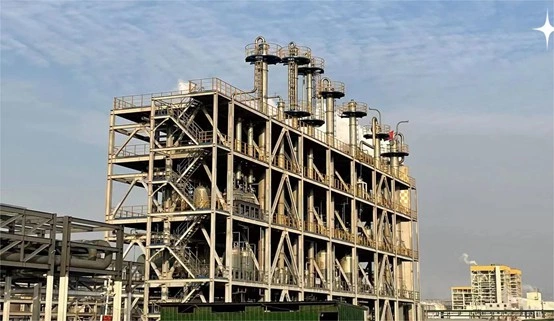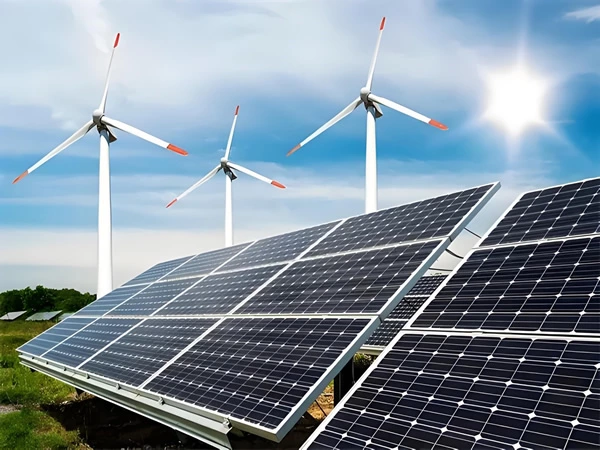
1.Project Background
In the production processes of industries such as chemical engineering, pharmaceuticals, and electronics, a large amount of organic solvents like ethanol, acetone, ethyl acetate, and dichloromethane are used, resulting in complex organic solvent waste liquids. If these waste liquids are discharged directly without treatment, it will not only cause a waste of resources, but also cause serious pollution to the environment. At the same time, enterprises will face high costs for hazardous waste treatment. The traditional processing methods have problems such as low recovery efficiency, insufficient purity, high energy consumption and single applicable scenarios. To achieve efficient recovery and recycling of organic solvents and reduce the operating costs and environmental protection pressure of enterprises, a certain enterprise has built an organic solvent waste liquid recovery and reuse facility with an annual production capacity of 30,000 tons, comprehensively applying various distillation technologies such as batch, continuous, atmospheric pressure, pressurized, vacuum distillation, azeotropic distillation, and extractive distillation. It is equipped with equipment made of 304, 316L, TA2 and other materials to create large-scale distillation columns (DN1200×32300mm), meeting the treatment requirements of different types of organic solvent waste liquids.
2.Technological process
(1) Pretreatment of waste liquid
The collected organic solvent waste liquid first enters the pretreatment tank, where suspended particles and stratified insoluble impurities are separated through static sedimentation. Further remove the tiny solid impurities by reusing the filter; Subsequently, based on the composition of the waste liquid and the subsequent distillation requirements, adjust the pH value to an appropriate range. At the same time, break the emulsion with a demulsifier to provide stable raw materials for the subsequent distillation operation.
(2) Diversified distillation separation
Batch distillation: For small batches of organic solvent waste liquid with complex components and long processing cycles, batch distillation columns are adopted. First, the waste liquid is added to the bottom of the tower at one time. Through gradual heating, the components are distilled out in sequence according to their boiling point differences to achieve initial separation. This method is suitable for the recovery of special organic solvents in laboratory research and development or small-scale trials.
Continuous distillation: For waste liquids with large processing volumes and relatively stable components, continuous distillation columns are adopted. Waste liquid is continuously fed from the middle of the tower. Low-boiling-point components are distilled from the top of the tower, while high-boiling-point components are discharged from the bottom, achieving continuous production and improving treatment efficiency.
Atmospheric/pressurized/vacuum distillation
Atmospheric distillation: It is suitable for organic solvents with moderate boiling points that are not easily decomposed under normal pressure, such as ethanol and ethyl acetate, and is carried out for distillation separation at 1 atmosphere of pressure.
Pressurized distillation: For organic solvents with relatively low boiling points (such as dichloromethane), their boiling points are increased by pressurization, the volume flow rate of the gas phase is reduced, the size of the equipment and energy consumption are decreased, and the use of low-temperature cooling media is avoided at the same time.
Vacuum distillation: For heat-sensitive or high-boiling-point organic solvents (such as DMF, pyridine), the boiling point is reduced under negative pressure to prevent the decomposition or polymerization of organic solvents caused by high temperature and ensure product quality.
Azeotropic distillation and extractive distillation:
Azeotropic distillation: When an organic solvent forms an azeotropic substance (such as an ethanol-water azeotropic substance) with other components, a third component (such as benzene) is added to break the azeotropic equilibrium and achieve the separation of each component.
Extractive distillation: For systems that are difficult to separate through conventional distillation (such as methanol-acetone azeotrops), a high-boiling-point extractant (such as ethylene glycol) is added to change the relative volatility between components, thereby achieving the separation purpose.
(3) Product refining and Recycling
The crude organic solvent product obtained through the above-mentioned distillation separation enters the finished product refining tower for secondary distillation or adsorption treatment to further remove residual impurities. The final obtained organic solvent product with a purity of ≥99% can be directly reused in the production process. The condensate water, residue and other wastes produced during the distillation process are discharged or properly disposed of after being treated to meet the standards.
3.Technical advantage
(1) Diversified technologies have strong adaptability
A variety of distillation technologies can be flexibly combined to handle over a hundred types of organic solvent waste liquids such as ethanol, acetone, and dichloromethane, covering different types of waste liquids in industries like chemical engineering, pharmaceuticals, and electronics. It has a wide range of applications and a recovery efficiency of over 95%.
(2) High efficiency and energy conservation as well as high-purity recycling
The appropriate distillation method should be selected based on the characteristics of organic solvents. For instance, vacuum distillation reduces the energy consumption of heat-sensitive substances, while azeotropic/extractive distillation breaks through the azeotropic limit and enhances the separation efficiency. The overall energy consumption of the device is reduced by 30% compared with the traditional process, and the product purity is ≥99%, meeting the industrial reuse standards.
(3) Corrosion resistance and long service life design
The main equipment is made of 304, 316L stainless steel and TA2 titanium, respectively, to cope with different corrosive media. 304 stainless steel is suitable for conventional organic solvents, 316L stainless steel is resistant to strong corrosive environments containing chloride ions, and TA2 titanium material is used to handle strong oxidizing or highly corrosive organic solvents (such as hydrofluoric acid systems), extending the service life of equipment to 10-15 years and reducing maintenance costs.
(4) Intelligence and Security Assurance
Equipped with an automated control system, it can monitor parameters such as temperature, pressure, liquid level and component concentration inside the tower in real time, and automatically adjust operating conditions such as feed rate, reflux ratio and heating power. Install emergency shut-off valves, flammable gas alarms, overpressure relief and other safety devices to ensure the safe and stable operation of the equipment.
4.Application field
(1) Chemical industry
Recycle organic solvents such as benzene, toluene, xylene and cyclohexane for use in the production of coatings, inks and adhesives, reducing the raw material costs of enterprises and decreasing the purchase volume of organic solvents.
(2) Pharmaceutical Industry
Recover organic solvents such as ethanol, acetone, ethyl acetate, and dimethyl sulfoxide (DMSO) used in the pharmaceutical process to meet the strict requirements for solvent purity in drug production and ensure drug quality.
(3) Electronics Industry
Recover organic solvents such as isopropyl alcohol, acetone, and NMP (N-methylpyrrolidone) used in semiconductor manufacturing and electronic component cleaning to improve resource utilization and reduce environmental protection treatment costs for enterprises.
(4) Other industries
In industries such as printing, coating, and new energy batteries, achieving the recycling of organic solvents helps enterprises implement the concept of green production, which is in line with national environmental protection policies and sustainable development requirements.


